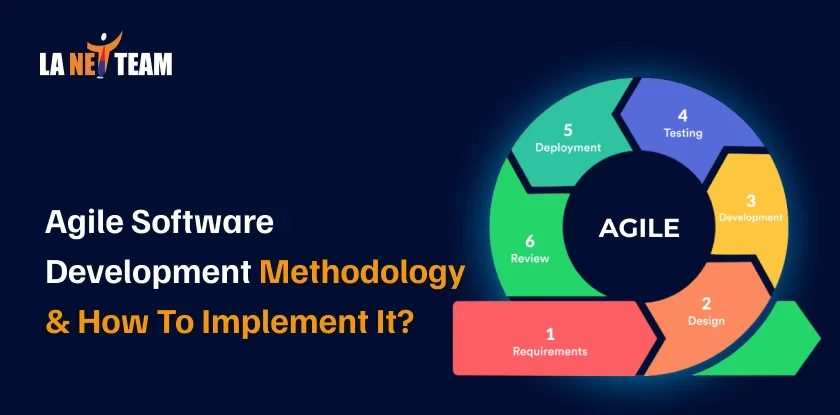Did you know? Teams using Agile deliver projects 60% faster. They also cut failure rates by almost 30% compared to traditional methods.
The reality is…. Today’s software is moving fast. If your team spends months only planning, your competitors will get ahead. Customers want updates now and not a year later.
That’s why the Agile Software Development methodology is helpful. It’s a flexible method of building software step-by-step. This lets teams release features quickly, adapt to feedback, and keep users happy.
What is Aglie?
Agile is a mindset and an approach to work. It focuses on flexibility, teamwork, and quick value delivery.
It’s less about strict rules and more about a mindset that helps teams to adapt and keep improving.
What is Agile methodology?
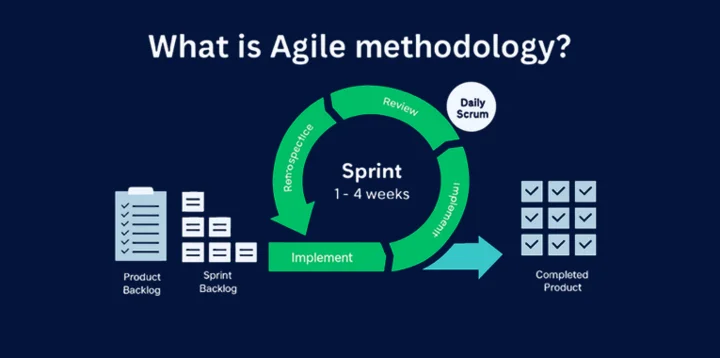
Agile methodology refers to the specific practices, methods, or frameworks that teams use to put the Agile mindset into action in software development.
This method follows the Agile manifesto. It emphasizes flexibility, customer satisfaction, and clear team communication.
What are the benefits of Agile Development Methodology?
Using Agile methodology to manage software comes with many advantages. Here are those:
- Enhanced quality of products: Testing is done throughout the process, not just at the end. This resulted in a quality and reliable product.
- Faster delivery: Agile helps teams release software in small parts. This way, users get the product quickly. Additionally, teams can receive feedback early and make adjustments quickly.
- Greater flexibility: The Agile process does not accept change in any phase of the project. This causes the product to be more in line with what users desire.
- Motivated teams: Agile empowers development teams through providing them with a choice of how they work. This freedom enhances the confidence of the team and team productivity, resulting in improved outcomes.
- Lower risk: Agile releases software in smaller parts. This way, problems can be spotted and fixed quickly before they impact the whole project. This reduces the chance of large failures and minimizes risk.
9 Types of Agile Development Methodology
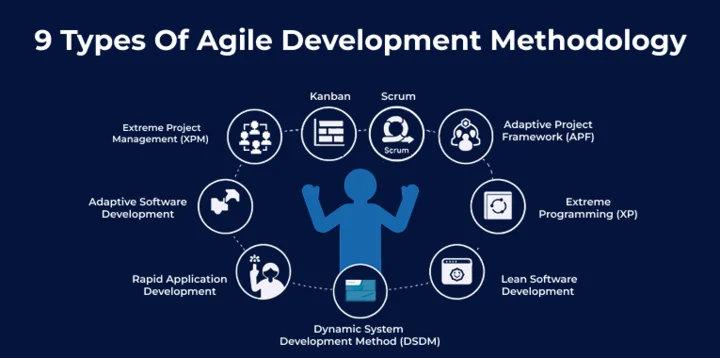
1. Scrum:
Scrum is the most common Agile framework. It breaks work into short cycles called sprints (usually 1–4 weeks). Teams follow regular rituals like:
- Daily stand-ups
- Sprint planning
- Reviews
- retrospectives
Key role: Product owner, Scrum Master, Development team
2. Adaptive Software Development:
ASD is about learning and adapting as you go. Instead of fixed plans, teams move through cycles of speculate, collaborate, and learn.
3. Rapid Application Development:
Rapid Application Development speeds up development by creating quick prototypes. It uses frequent user feedback and breaks work into smaller pieces for easy testing.
4. Kanban:
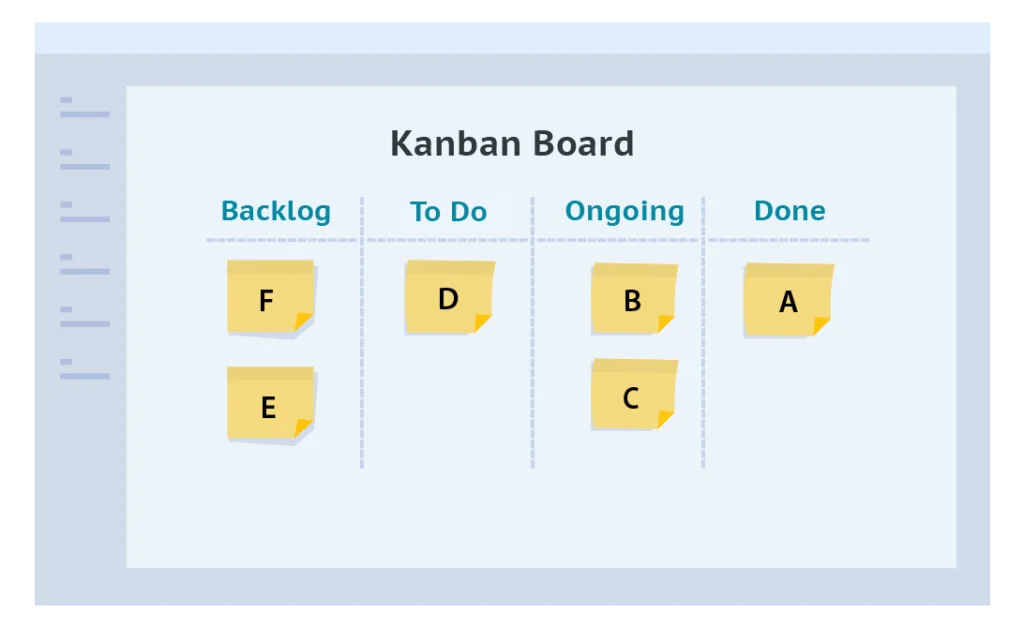
Kanban uses boards to visualize work and limits tasks in progress to avoid overload. It’s flexible and enables continuous delivery without fixed time cycles.
5. Adaptive Project Framework (APF):
APF is ideal for projects with frequent changes. After each small cycle, teams reassess and adjust plans with stakeholders input.
6. Extreme project management (XPM):
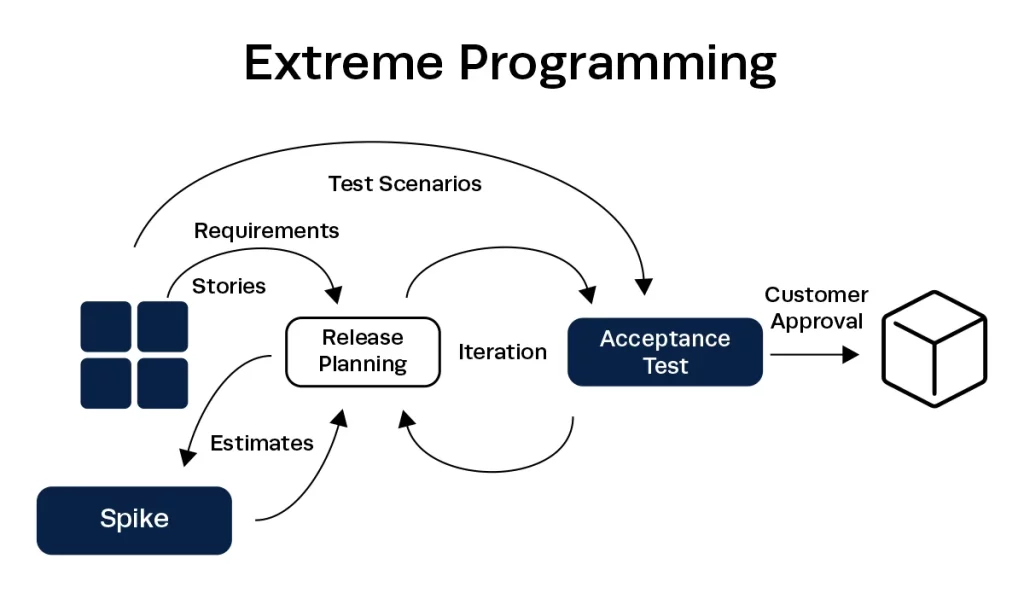
XPM is for highly complex and unpredictable projects. It emphasizes teamwork, flexibility, and rapid responses to constant change.
7. Extreme Programming (XP):
XP is one of the popular agile methodology, also known as ‘Extreme Programming’. It improves code quality by using pair programming. Additionally, do test-driven development and continuous integration. But the key of this method is ‘close customer collaboration.
8. Lean Software Development:
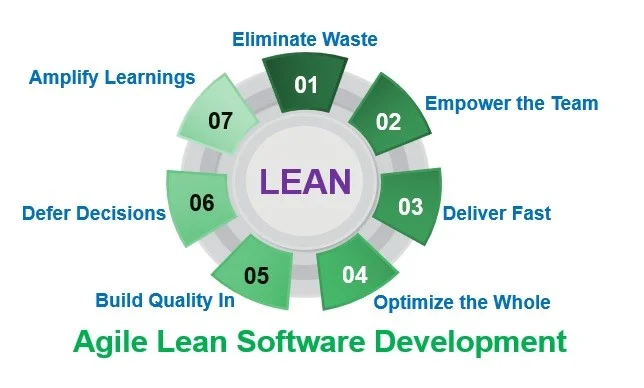
Lean focuses on eliminating waste, delivering fast, building quality in, and empowering the team to make decisions late.
Read more about Lean Software Development in details.
9. Dynamic System Development Method (DSDM):
DSDM is a structured Agile process covering the whole project. It uses fixed timeboxes, user involvement, iterative delivery, and integrated testing. Focusing on business needs and quality while staying flexible.
How To Implement Agile Methodology?
Now you know Agile is the right path. Here’s how to make it work smoothly without disrupting everything:
Step 1: Assess Your Current State
First things first, be honest about where your team stands now. What’s working and what causes frustration? You should ask your team to share the input in response to this and hear them out.
Step 2: Start small with a pilot team.
Don’t try to transform your organization overnight. Choose a team that is interested in agile to start the journey and let them learn and experiment.
Step 3: Invest in Training and Coaching
This is where many companies don’t spend and then complain that agile doesn’t work. The truth is, proper training is important. If possible, hire a coach to guide the team. Yes, it will cost you, but failing at agile will cost you more.
Step 4: Choose Your Framework and Tools
This step can make or break your plan. It involves picking an agile tool or framework that will work best for your company’s project. Make sure to not choose tools that are complicated as, the it will not give you the results as per the plan.
Step 5: Establish Agile Rituals
After analyzing the tool that fits your company, the next step involves establishing agile rituals.
Over in this step, consistency matters; you have to perform rituals frequently, such as daily stand-ups, sprint planning, and retrospectives. If not performed well, it can break the entire process.
Step 6: Create Feedback Loops
This step means using various methods to listen to customers. You can use analytics, conduct interviews, or review support tickets. The motive is not to collect feedback but to use it to improve the product as per customer needs.
This matters for SaaS. Customer needs change quickly. Acting on feedback keeps the product useful and competitive.
Step 7: Scale Gradually
Once the pilot team succeeds, slowly expand Agile practices to other teams. Share successes and learn from mistakes, since each team may need adjustments.
Closure
Agile methodology is not just about quick sprints or daily meetings, as normally people think.
In simple language, it helps in creating software smoothly and quickly that people uses. They receive feedback from customers, and then this feedback is used to make improvements.
In 2026, by using this approach, you can crack the code to compete with big companies. As it will help you to adapt fast to the changes, make a better customer base, and keep improving with every update.
